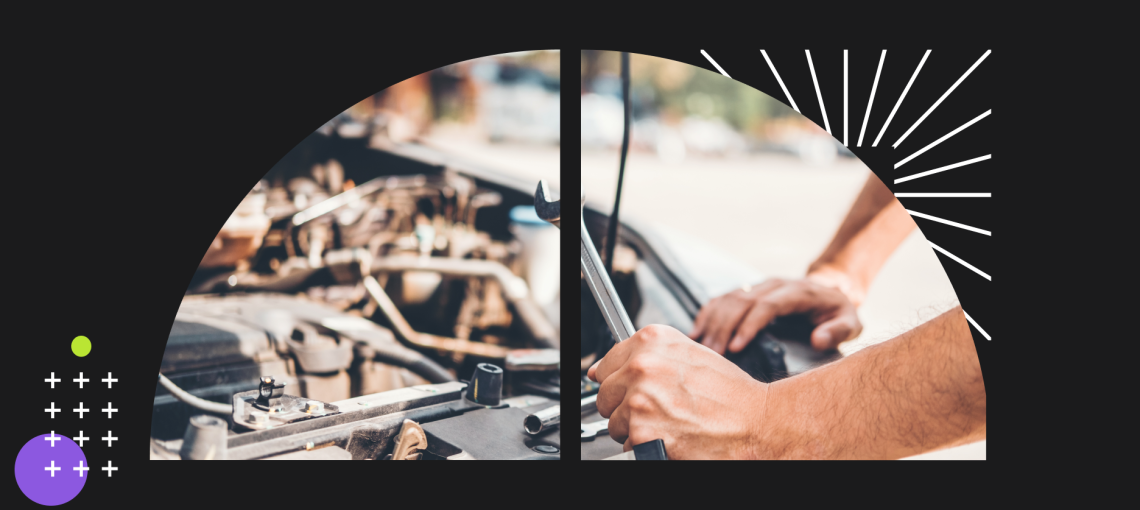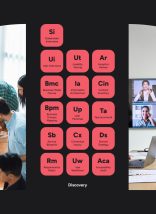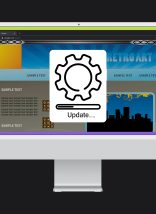In the previous post, I discussed how the planning and development of a custom website can be similar to having a custom house designed and built. The analogy works in many ways, particularly in the planning and designing phases, but it’s not a perfect analogy.
In this post, I’ll correlate website maintenance and ongoing development with owning a car. Keeping an application “purring like a kitten” takes effort, and I also won’t leave out aspects of digital upkeep that just don’t make sense with car terminology.
When you’re done, the last post in the series compares the experience with your vendor to a fine dining experience.
Keeping Fuel in the Tank
Visiting the gas station is probably the most ubiquitous aspect of owning a car, unless the sole purpose of the vehicle is keeping it on a pedestal for viewing only. With a website, the same case can be made for hosting. Server or cloud hosting is foundational for a site to be usable. And similar to a car that may be driven more or less in a month, hosting costs can fluctuate – particularly from high or unexpected amounts of traffic. (Although we want web traffic, we don’t want car traffic.)
With a website that your users (or future customers) depend on, someone needs to be monitoring that hosting. A common offering these days is the Managed Service Provider (MSP). Picture this as a dedicated fueling crew, keeping the gas and fluids topped off. With the monitoring and ownership of an MSP, it could be said they also maintain and protect your garage and driveway, which can be compared to how your site reaches the rest of the internet.
Maintenance Every 5,000 Users or 3 Months, Whichever Comes First
No, not really every 5,000 users. But maintenance should be performed at least every 3 months. You may fuel your car regularly, but you also need oil changes and other regular maintenance items. Hosting on its own isn’t enough.
Code libraries and software versions need updates. If your site uses a Content Management System, those platforms also require regular updates. Code needs love just like your car. Your team of mechanics (development team) should perform these regularly.
Sometimes these updates can cause small unexpected changes to the site, and fixing those are usually part of ongoing maintenance. It could be considered professional detailing whenever you bring in your site for maintenance. Keep it shiny! If you don’t perform regular updates, issues can build and compound. This is what we refer to as technical debt.
But Wait, I Want Something New On My Site
We haven’t even gotten to new development yet – it’s all been upkeep. Yup, that’s on purpose. Would you spend money to upgrade a car you don’t even bring in for maintenance? I doubt it. New features don’t correlate to owning a car quite as well – but maybe at some point you want a custom paint job or to upgrade the console.
In my experience, it’s pretty uncommon that someone builds and launches a brand new site and then never wants anything to change. The process of a new feature for your car or your website is roughly the same: you talk to someone about what you want, provide some detail, get an estimate or quote, you approve the work, the work is completed, and you’re good to go. Where does website development beat out vehicle improvement? You don’t have to drop your website off and rely on another one while the work is being done.
Lifespan & Resale Value
Just like a car, your web application will have a longer lifespan if it’s better maintained. You might drive daily and reliably for 8 years, but if you never take it to the mechanic, the life span of your car is going to be shorter. If you let technical debt build and build, there can be a point that it would be cheaper to rebuild a new site than upgrade and fix the current one. There may not be “resale value” in a web application, but in five to ten years when you’re ready for a new one, the cost of building a new one will be lower if it’s been cared for.
I’ve known people who drove cars to the absolute maximum end of a car’s lifespan, spending as little money as possible on maintenance and upkeep. And yes, that’s an option with a website. However, as a website that presents your brand, brings in customers, and is possibly part of your employee’s workflow – it’s not going to end well.
Where The Car Analogy Screeches to a Halt
As you can see, there are a lot of similarities between owning a website and a car. But not everything fits.
The most important difference? A website isn’t a product. There’s a reason we’re not discussing how buying a car is like building a site – it’s not. Almost all cars are manufactured, with certain options to choose from, in very specific configurations. A website simply isn’t a thing you buy, it’s really a service that you (with a development crew) build.
Another difference is with a website, new technologies (or just time) can uncover vulnerabilities in code. This is why updates to libraries are important, as they’re where those vulnerabilities get fixed. Every time you bring your car in for an oil change, you’re not also changing the locks and reinforcing the windows. There typically aren’t new advances in car theft that you need maintenance every few months to prevent. However, even this is changing given the amount of digital components in vehicles, such as recent stories of key fobs being maliciously replicated.
Problems or bugs will occur on a website. It’s reasonable to assume or hope a car won’t have any problems or recalls for the first couple years. Bugs will happen on a website. I promise. With a car, there’s typically a single operator (driver). On a site? Thousands of visitors with unique combinations of browsers, operation systems, hardware, and digital savviness are using your application. It’s impossible to guarantee every aspect of a site will work all of the time for everyone.
There’s also not a good vehicle comparison to deployments. Deployments are when a site is first launched, but also any time code or hosting changes are made. Possibly driving the car off the lot is equivalent to the initial deployment of a new website, but other than that? I suppose when you leave the mechanic with your car in top shape – but it’s not a metaphor that feels right.
There’s plenty of other aspects that don’t overlap between cars and websites. Website hacking, car insurance, and your friend borrowing your car – it doesn’t all match up.
Finishing The Trilogy
I hope this article and the others in the series help to provide you with better context in your next web site or application project. To wrap up the series I’m going to dive more into the experience of working with a partner when building a website.
How Building a Custom Website Is (and Isn’t) like… A Fine Dining Experience (3 of 3 in Series).






